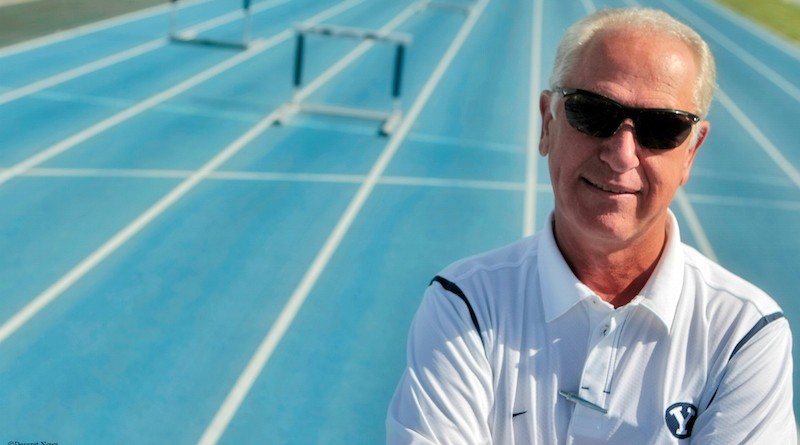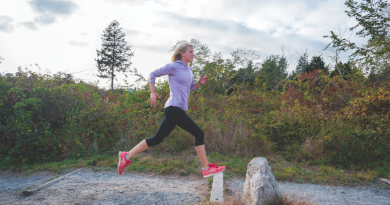Nutrition Tips From An Olympic Coach
Olympic coach Craig Poole shares his winning nutrition tips.
Who coaches Vermont’s top coaches?
In the 30 years he coached women’s track and field teams at Brigham Young University in Utah, Craig Poole has helped teams win 27 of 29 outdoor conference championships and 17 of 20 indoor ones. He was conference Coach of the Year 17 times and his 2009 team took third at the national championships.
He also worked for four years as the director and head coach of the USATF Resident Program at the Chula Vista Olympic Training Center in California and was named to the 2004 U.S. Olympic coaching staff.
All the drills and workouts won’t do you any good if you don’t think about what you’re putting into it, Poole says. The athlete’s diet, according to Poole, should be considered as seriously as the workouts.
“It has to be something you make part of your everyday routine,” he says. “There are no shortcuts here.”—Evan Johnson
- Carbs, fats and proteins – know how much
“Unless you’re a shot-putter and looking to put on mass, you want a Maserati engine in a Volkswagen chassis,” he says. “You’ve got to have a magnificent engine driving a low weight in order to run fast or jump high.”
Every athlete’s own diet will be specific to his or her needs, but there are some basic building blocks that can have a big bearing on your success. According to Poole, the amount of protein you consume is part of that since protein fuels long-term exercise and helps recovery afterwards. The National Institute of Health’s dietary reference intake for protein for adults regardless of physical activity is .36 grams per pound of body weight per day.
For women, that often comes out to about 46 grams of protein and for men, about 56 grams.
For most people, Poole says that means “about as much protein as is in two quarter-pounders from McDonalds.” However, athletes may need as much as 50 percent more.
But that protein doesn’t have to come from meat. Poole recalls meeting athletes from Ghana. “When they saw how much meat we Americans ate, they just about puked,” he says. “That’s because they got their protein from rice and beans.” A cup of black beans, for instance, has 15 grams of protein and a cup of yogurt, another 11 or so.
Fats make up another energy building block, since they provide the highest concentration of energy of all nutrients. A gram of fat equals nine calories and while these calories are less accessible to athletes performing fast and intense exercise, they are friend to athletes completing lower intensity exercise for extended periods of time.
While it takes the body longer to break down fats and proteins into useable energy for the muscles, carbohydrates are easily digested and can quickly give muscles the sugars they need.
How much fats, carbs and protein you need is for you to decide and some athletes tinker with ratios and percentages. In the past, athletes were recommended a diet of 40 percent protein, 40 percent carbohydrates and 20 percent fats. New research has shown that some fats can be healthy, while many people consume too many carbohydrates. Finding a diet that works for you can come through trial and error.
“A smart athlete will weigh him or herself before and after every workout,” he says. “For the normal population that’s what they have to go by.”
Your amounts of proteins, carbs and will also vary depending on the kind of sport you’re doing. For longer distances like marathons, large amounts of carbohydrates will satisfy a large energy demand, while runners training for shorter distances like five and ten-kilometer races will benefit from a balance of all three parts. Athletes needing to maintain musculature like sprinters and weight lifters will want more proteins and fats and fewer carbohydrates.
- You need a recovery beverage and milk is it
After an extended workout, be that in a gym or on the road, the body needs to replenish what it spent.
Some athletes recover with water, milkshakes with protein powders, sports drinks and supplements, but for Poole, there’s only one beverage that’ll do: Milk.
“In most cases, unless you’re allergic to milk, it provides the right ratio of the carbohydrates, proteins and vitamins and minerals that your body needs to rebuild,” he says. Milk is rich in calcium and vitamin D, which are needed for strong bones.
Not only is it a good option for after a workout, it’s also an attractive choice for a pre-race beverage, if you have enough time (usually an hour) to digest. The added proteins and fats will ensure your digestion doesn’t cannibalize your own tissue during exercise.
For athletes under Poole’s coaching at BYU, the refrigerator at the gym is perpetually stocked with gallons of two-percent chocolate milk. Why the chocolate? Because it tastes good.
“We’re all chocoholics at heart,” Poole says.
- Time your meals right
When it comes to combining exercise and diet, Poole says timing is everything, starting with the first and most important meal of the day: breakfast. The meals you consume in the day supplement your energy supplies, while dinner replenishes.
For a complete breakfast, Poole recommends a serving of protein like eggs or cottage cheese, coupled with a carbohydrate, like oatmeal or pancakes and any fruits or vegetables. To avoid any gastrointestinal distress, wait one to two hours before exercising.
Drinking a glass of chocolate milk within 30 minutes of stopping exercise, says Poole, allows your body to more readily absorb more of nutrients you’ll put into it at your next meal.
Two hours after your workout, Poole says you’ll need to have that balanced meal in order to replenish the rest of the carbohydrates and proteins you’ll need to get ready for the next day.
“That’s what gets you back to phase-one for the next day’s workout,” Poole says.
- Watch your iron and magnesium levels
One of the most common vitamin deficiencies according to the World Health Organization is iron, which helps transport oxygen in the bloodstream. A simple blood test can indicate any vitamin deficiencies and sometimes doctors can recommend a vitamin supplement to increase iron supplies, especially in women. Poole says dietary choices can prevent iron deficiencies. Dark leafy greens, lentils and animal proteins are all high in iron. A 2009 study at BYU found magnesium to be important for athletes’ cognitive and metabolic function; even a marginal deficiency can affect athletes’ performance. The recommended daily intake for women is 310 to 320 milligrams a day and more if you are pregnant or breast feeding and for men, 410 to 420 mg. Foods high in magnesium include greens, avocados, yogurt, bananas and dried fruits.
- Get enough food, rest and exercise
Most of us eat three meals a day, but for athletes at the peak of their performance, that number can be higher. A lot of athletes, including distance runners and weight lifters, will eat six or seven smaller meals a day. The variety and frequency of those meals, Poole says, provides a constant stream of nutrients for them.
Poole points to the Bulgarian weight-lifting teams of the 1980s and 90s as an example. The tiny nation produced a string of champions with a program that had them doing intense weightlifting at the maximum level of exertion right after they woke up, then eating a balanced breakfast and then taking a nap. This allowed their bodies to fully recover and absorb the nutrients from their meal.
- Sip, don’t drink
Athletes know the importance of staying hydrated throughout the day, but Poole cautions against consuming too much and advises to drink small amounts frequently. It’s important to drink before you feel thirsty and are therefore dehydrated. You’ll also need to remember to keep drinking even in cold or dry climates, which can cause you to feel less thirsty.



